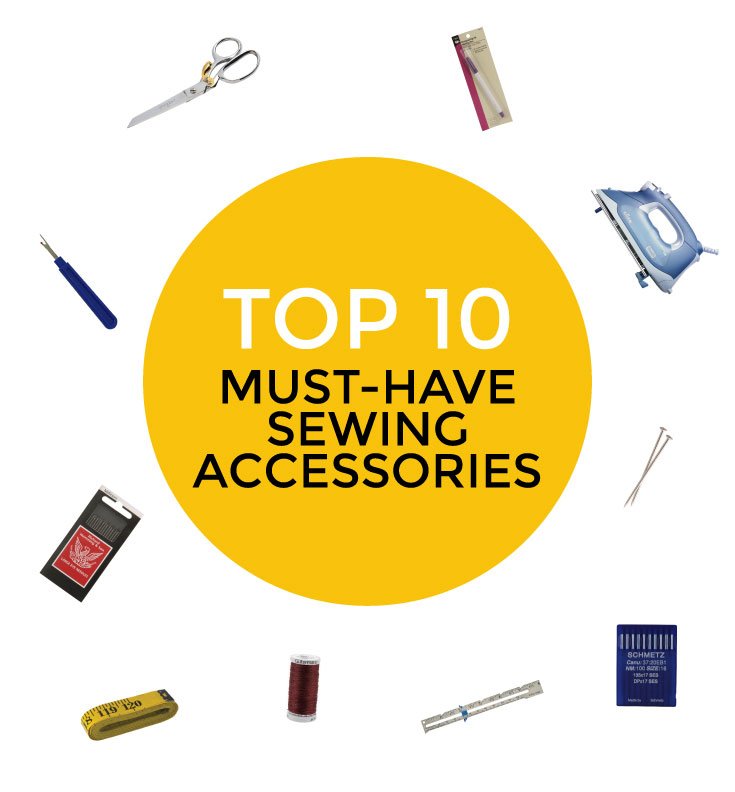My Top Sewing Accessories

Whether you are new to sewing, or thinking of getting into sewing, having the right accessories at your fingertips is essential. Here are my top sewing accessories that I have relied on for years. They are listed in no particular order, and all are equally important.
Scissors – You will need two pairs of scissors. The first pair is for cutting paper such as PDF patterns or commercial tissue patterns. Just a basic pair of cutting scissors will be fine. You will also need a sharp pair of scissors strictly for cutting fabric. Only use your fabric scissors for fabric, as cutting paper will dull you scissors quickly.

My favorite fabric scissors are Gingher knife edge spring action trimmers. These scissors have a spring action that opens the scissors after each cut. This cuts down on the stress of cutting and give you hand a much needed break.

Straight Pins – You will need straight pins to pin your patterns to your fabric, and also to pin your fabric together prior to sewing. Over the years, I have used many different straight pins. Ballpoint pins, glass head pins, etc. The best pins that have worked for me are the Iris superfine straight pins. They really fine and do not leave holes in delicate fabrics like silks and sheers.

Seam Ripper – Seam rippers are used to take seams apart. Even the most experienced seamstress will make mistakes. I keep a couple of seam rippers handy, but one quality one will get the job done.

Tape Measure – You will need to take your body measurements to know exactly what size pattern you will need. A flexible tape measure is all you need to take the basic hips, chest, and waist measurements.

Marking Pin – There are marks that will be helpful to make on your fabric prior to sewing such as darts and notches. Some people prefer to use chalk to mark there fabric. I like disappearing ink marking pens. They come in a few different colors, and will fade away after a day. I have used these for years, and find them the best marking tools. They can even eliminate the need for pinning in certain situations.

Sewing Gauge – Another tool I cannot be without is my metal sewing gauge. It is a 6 inch gauge, and is so helpful when measuring hems. It has a sliding marker on that will stay put to keep your hem measurement consistent.

Thread – High quality thread is important in creating quality garments. Cheaper threads will pop and do not sew as well. I love Gutermann thread for all of my sewing projects. They come in tons of colors, and is a strong quality thread. It makes sewing in your sewing machine and hand stitching so much easier when you have quality thread that won’t tangle and pop.

Machine Needles – There are different size sewing machine needles for the different fabrics you will work with. Leather needles, knit needles, and basic needles should get you started. Always check to make sure your needle will work with the particular fabric you are using. My favorite brand of sewing needles are Schmetz.

Hand Needles – You will need different size hand needles again based on the fabric you are working with. To finish off your garments, sometimes you need to hand stitch buttons, hook and eye closures and slip stitch something closed. My favorite hand stitching needles are Milliners.

Iron – Last but certainly not least you will need a good steam iron. Pressing seams are essential to a quality finished garment. An iron that produces steam is the best to get the job done right. Any steam iron that you are comfortable with will be fine.
